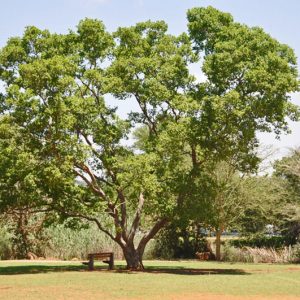False olive / Vals olyf
False olive / Vals olyf
If you want to attract butterflies, moths and birds to your garden the false olive is the way to go – not only does it provide food for wildlife it is also a sweetly scented and beautiful tree.
Botanical Name:
Buddleija saligna
Did you know?
False olive makes good fuel wood as it burns with an intense heat.
Related products
White stinkwood / Wit stinkhout
White stinkwood / Wit stinkhoutAn ideal garden tree – the white stinkwood usually has a single trunk and broadly upright to rounded crown. When planted on the northern or western side of the house, the shade provided cools the house in summer yet allows the sun through to heat up the house in winter.
Botanical Name:
Celtis africana
Did you know?
When freshy cut, the wood has an unpleasant smell, hence the common names “stinkwood”.
Karee / Karee
Karee / KareeThe karee is a small- to medium-sized tree with a willow-like appearance due to its drooping habit. It’s not just an excellet shade tree, but also a great street tree. It can also be planted in parks or office complexes.
Botanical Name:
Searsia lancea
Did you know?
Searsia lancea is useful in providing natural soil stabilisation and increasing infiltration of rainwater into the soil, thus reducing erosion and raising the ground watertable.
Red milkwood / Moepel
Red milkwood / MoepelA medium sized decorative tree that has a spreading, densely rounded crown. It has the potential to make an excellent evergreen garden specimen for larger gardens, parks and golf courses. This tree casts a deep shade, which offers a cool escape from the hot African sun.
Botanical Name:
Mimusops zeyheri
Did you know?
The Transvaal red milkwood has gained its popularity with people, birds as well as monkeys and baboons through its tasty fruit which are sweet and high in vitamin C.
River bushwillow / Vaderlandswilg
River bushwillow / VaderlandswilgThe river bushwillow is often multi-stemmed and somewhat willow-like in habit. It boasts a beautiful form which is just as magical in autumn. Nowadays it is often grown as a street tree and also in gardens for ornament and shade.
Botanical Name:
Combretum erythrophyllum
Did you know?
Roots are used to treat venereal diseases and also as purgatives. Dried, powdered gum may be applied to sores.







